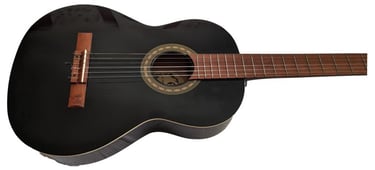
Quick Guide: Changing Acoustic Guitar Strings
Learn everything you need to know about changing acoustic guitar strings in this quick guide. Tips to keep your guitar sounding bright and playing smoothly.
magicchords.com
7/28/2025


Changing acoustic guitar strings is a simple but essential skill every guitarist should master. This quick guide walks you through the process step by step.
Changing acoustic guitar strings is a fundamental skill every guitarist should learn. Whether you're a beginner or an experienced player, fresh strings can dramatically improve your guitar's tone, playability, and overall feel. Over time, strings collect dirt, oils, and sweat, causing them to lose their brightness and tuning stability. That’s why changing acoustic guitar strings regularly is essential for maintaining a clean, resonant sound.
In this quick guide, we’ll walk you through the entire process of changing acoustic guitar strings in a simple, step-by-step format. You’ll learn how to safely remove old strings, clean your guitar, and properly install and tune guitar strings. We’ll also cover tips on choosing the right type and gauge of strings for your playing style, as well as how to stretch and settle new strings to keep them in tune longer


Whether you're preparing for a performance or just want your guitar to sound its best, knowing how to change your strings efficiently saves time and improves your playing experience. With a bit of practice, changing acoustic guitar strings becomes second nature and gives you more confidence in caring for your instrument. Let’s get started and bring new life to your guitar.


TIP 1: Learning guitar starts with simple, essential steps that build confidence and skill. One of the best ways to grow musically is to master the A minor chord, as it appears in countless songs and helps develop finger strength and coordination. By focusing on this chord early, beginners set a solid foundation for more complex progressions and smoother transitions later on.


Introduction to Changing Acoustic Guitar Strings
Changing acoustic guitar strings is an essential skill for all guitarists, whether they are beginners or seasoned players. The significance of this practice cannot be overstated, as the quality and playability of the instrument are heavily influenced by the condition of the strings. Over time, guitar strings become worn out due to factors such as playing frequency, environmental conditions, and the natural oils from the fingers. Consequently, their ability to produce a vibrant tone diminishes, leading to a lackluster sound that can hinder a player's performance.
For guitarists, fresh strings serve as a critical component for achieving optimal tone and sound quality. New strings not only enhance clarity and sustain but also improve intonation and overall playability. This is particularly important for acoustic guitar players, as the nature of the instrument's construction amplifies any tonal discrepancies. Old or worn strings may cause buzzing, tuning instability, and an overall dullness in sound, which can be frustrating for artists during practice or performance.
Moreover, understanding how to change strings effectively can empower guitarists to take greater responsibility for their instrument's maintenance. This knowledge can help ensure that their acoustic guitar remains in peak playing condition. Familiarity with changing strings also allows musicians to experiment with different types or gauges, offering a pathway to personalize their sound to better suit their playing style. From enhanced tonal diversity to improved responsiveness, the advantages of regularly changing acoustic guitar strings are manifold.
In essence, mastering the art of changing guitar strings is pivotal for any guitarist aspiring to maintain not just their instrument's performance but also their own musical expression.
Tools and Materials Needed
Changing acoustic guitar strings requires a few essential tools and materials to facilitate the process and ensure optimal results. A string winder is a handy tool that speeds up the task of removing old strings and installing new ones. It allows for rapid winding of strings onto the tuning pegs, significantly reducing the time needed for string changes. Pairing the winder with a built-in cut-off tool can also be beneficial, as it allows for quick trimming of any excess string length after installation.
A reliable tuner is another indispensable tool for ensuring your guitar is in tune after string replacement. While many acoustic guitar players prefer electronic tuners for their accuracy, clip-on tuners or tuning apps available on smartphones can also serve this purpose well. Accurate tuning is crucial for achieving the best sound from your newly changed strings.
Wire cutters are necessary for trimming the excess string length, especially when using thicker gauge strings that require more effort to cut. An acoustic guitar care cloth is also vital; it should be part of your toolset to clean the fretboard and body of the guitar before and after changing strings. This promotes better maintenance and longevity of your instrument.
When selecting new strings, understanding the various types available is essential. Acoustic guitar strings come in several materials, including nylon, phosphor bronze, and 80/20 bronze. Each material has distinct sound characteristics, catering to varied playing styles. Additionally, players must consider the gauge, or thickness, of the strings, as this affects playability and tone. Lighter gauges are easier to play but may produce a softer sound, while heavier gauges offer a fuller tone but can be more demanding on the fingers. Exploring different materials and gauges allows musicians to tailor their instruments to their specific preferences.
Step-by-Step Process of Changing Acoustic Guitar Strings
Changing acoustic guitar strings can seem like a daunting task to novice musicians, but it becomes a straightforward process once you break it down into manageable steps. The first step is to gather the necessary tools, which include a string winder, wire cutters, a tuner, and a soft cloth for cleaning. Once you have everything in place, you can begin.
The initial action involves removing the old strings. Using your string winder, carefully unwind each string from the tuning peg. As you do this, it’s advisable to gently pull each string away from the fretboard to reduce tension. Once the tension is sufficiently relieved, you can use the wire cutters to cut the strings near the bridge. Safely dispose of the old strings to maintain a clean workspace.
After removing the old strings, it is crucial to clean the guitar. Take the soft cloth and gently wipe down the fretboard and body of the guitar. This helps in removing dirt and oils that may have accumulated over time and enhances the longevity and performance of your instrument. While cleaning, inspect the fretboard for any rough spots that may need conditioning; this can be done using fretboard oil if necessary.
Next, you move on to installing the new strings. Start by placing one end of the string through the bridge and then pull it up to the tuning peg. Make sure to leave some slack for winding the string tightly around the peg. Wind the string neatly, ensuring it coils downwards for stability. Repeat this process for each string. Once all strings are installed, use your tuner to achieve the correct pitch, adjusting the tension as necessary. Finally, stretch each string gently to help it settle and stay in tune.
Tips for Maintaining Your Acoustic Guitar Strings
Proper maintenance of acoustic guitar strings is essential for achieving optimal sound quality and prolonging their lifespan. One of the first and most important practices is to ensure that your strings are cleaned regularly. After each playing session, it is advisable to wipe down the strings with a soft, lint-free cloth. This simple act removes oils and dirt that can accumulate from your fingers, which may otherwise lead to corrosion and a dull tone over time.
Another vital aspect of string maintenance is storage. When not in use, it is best to keep your acoustic guitar in a case or at least in a controlled environment away from direct sunlight and extreme temperatures. Fluctuations in humidity and temperature can alter the tension and integrity of the strings, leading to a shorter lifespan. Ideally, the storage area should be kept at around 40-60% humidity and a stable temperature.
It is also important to be aware of when it is time to replace your strings. Signs indicating that your strings may need changing include a loss of brightness in tone, difficulty in staying in tune, or visible signs of wear such as fraying or discoloration. While personal preference plays a role in determining how frequently to change strings, many guitarists find that changing them every few weeks can yield a consistently vibrant sound. Keeping a string-changing schedule based on playing frequency can also be beneficial in developing good habits for string care.
In conclusion, implementing these best practices can significantly enhance the longevity of your acoustic guitar strings. Regular cleaning, proper storage, and timely replacement are fundamental to ensuring your guitar maintains its optimal sound quality and performance over time.
TIP 2: Playing an instrument offers mental and emotional benefits at any age, and guitar lessons for seniors are a perfect way to stay active and creative. With patient instruction and simple techniques, older beginners can enjoy learning at their own pace while building confidence and connecting with music in a meaningful way.




